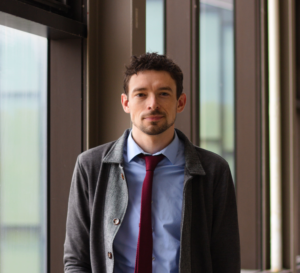Source: Michigan News

 The prevailing urban planning models are based on the concept that a city’s population is growing, but for many rustbelt cities like Detroit, the population isn’t growing––it’s shrinking, and cities must react to this reality to properly serve residents.
The prevailing urban planning models are based on the concept that a city’s population is growing, but for many rustbelt cities like Detroit, the population isn’t growing––it’s shrinking, and cities must react to this reality to properly serve residents.
To that end, the Detroit School was created in 2012 by University of Michigan Professor Margaret Dewar, now emerita, and three PhD students in the Taubman College of Architecture and Urban Planning, who wanted to view urban planning through the lens of shrinking populations.
This year, the Detroit School accepted six papers from PhD students in multiple disciplines to present at a national conference, the goal being to share Detroit School research with a broader audience for the first time.

Rob Pfaff
“You can use a case study from a very extreme example like Detroit to help other cities,” said Rob Pfaff, one of three student coordinators of the Detroit School series, and a PhD candidate in Urban and Regional Planning. The findings in the chosen abstracts are especially relevant in rustbelt or shrinking cities like Milwaukee, Pittsburgh, St. Louis, New Orleans, Cleveland, and Gary, Pfaff said, and bring a fresh perspective to the discussion.
Michael R.J. Koscielniak, a PhD candidate in Urban and Regional Planning, followed the dirt in “Backfill to the city movement: Demolition and land beyond developability in Detroit, Michigan.”
“My research has probed the process of demolishing a building, from policy institutions to grading the vacant lot to preparing for redevelopment,” he said. “I traced the money and materials that enabled demolitions. I stumbled upon a regional supply chain of backfill material––dirt, gravel, and crushed basements––that contractors commanded to drive their own income-generation priorities.”
How that backfill market appeared, who and what controlled it, and how that market is embedded in regional real estate markets is essential for understanding what demolition achieves beyond developable land, Koscielniak found. He used the findings to argue that the demolition program has not prompted a rush on Detroit property.

Alexa Eisenberg
Alexa Eisenberg, a doctoral candidate in the School of Public Health, examined the effectiveness of state and local government tax relief policies in preventing foreclosures in, “‘It’s like they make it difficult for you on purpose’: barriers to property tax relief and foreclosure prevention in Detroit, Michigan.”
“Our research . . . examines how a tax relief program known as the Poverty Tax Exemption failed to protect many low-income homeowners from dispossession through tax foreclosure in Detroit,” Eisenberg said. “Our research is important because it demonstrates how a policy that is progressive on its face does not necessarily translate into meaningful benefits for homeowners. A policy’s implementation process is the key to its success––and cities like Detroit, with poor fiscal conditions and many homeowners in need of tax relief––have neither the capacity or incentive to implement fair and effective tax relief.”
Other project abstracts include:
- “Drawing your neighborhood: Cognitive mapping in moments of crisis and change,” which looks at how residents view neighborhood boundaries amid gentrification and other changes. The study ultimately questions the usefulness of planners’ stagnant definition of the term “neighborhood” as a unit of analysis. Author is Christine Hwang, PhD student, Urban and Regional Planning.
- “The new moral ‘master’: Social work, motherhood, and racial uplift in interwar Detroit,” examines how the Detroit Urban League used the idea of the “new Negro” to control and monitor the black community, focusing on newly-arriving African-American mothers from the South. Work centers on Detroit to give origins of the contemporary conversations on remaining black citizens, and to contextualize national conversations. Author is Maggie Carlton, doctoral candidate, history.
- “New sounds in an old city: Detroit Symphony Orchestra and the Detroit revival,” examines how the DSO helped resuscitate Midtown Detroit with its relocation to Orchestra Hall and later expansion. It also looks at the DSO’s transformation after a contentious strike, and its goal of becoming “the most accessible orchestra on the planet.” Author is Nathinee Chucherdwatanasak, graduate student, historical musicology.
- “A metropolitan dilemma: Race, power and regional planning in Detroit,” studies political regimes and power in the context of regional planning in Detroit, which has a highly decentralized metro region with an exceptionally racialized political economy. The case of Detroit ultimately indicates both the staying power of suburban and urban political regimes, and the highly contested nature of metropolitan institutions. Detroit’s experience vividly illustrates patterns that characterize other regions as well. Author is Joel Batterman, PhD student, Urban and Regional Planning.


